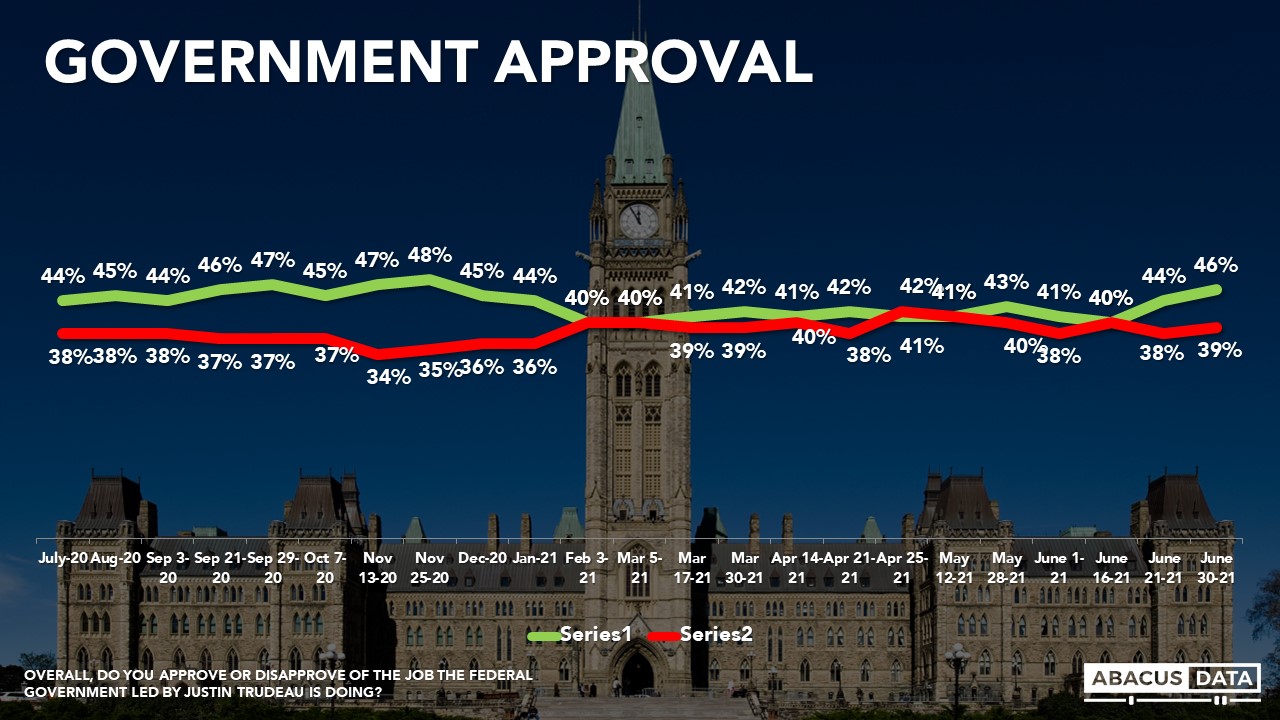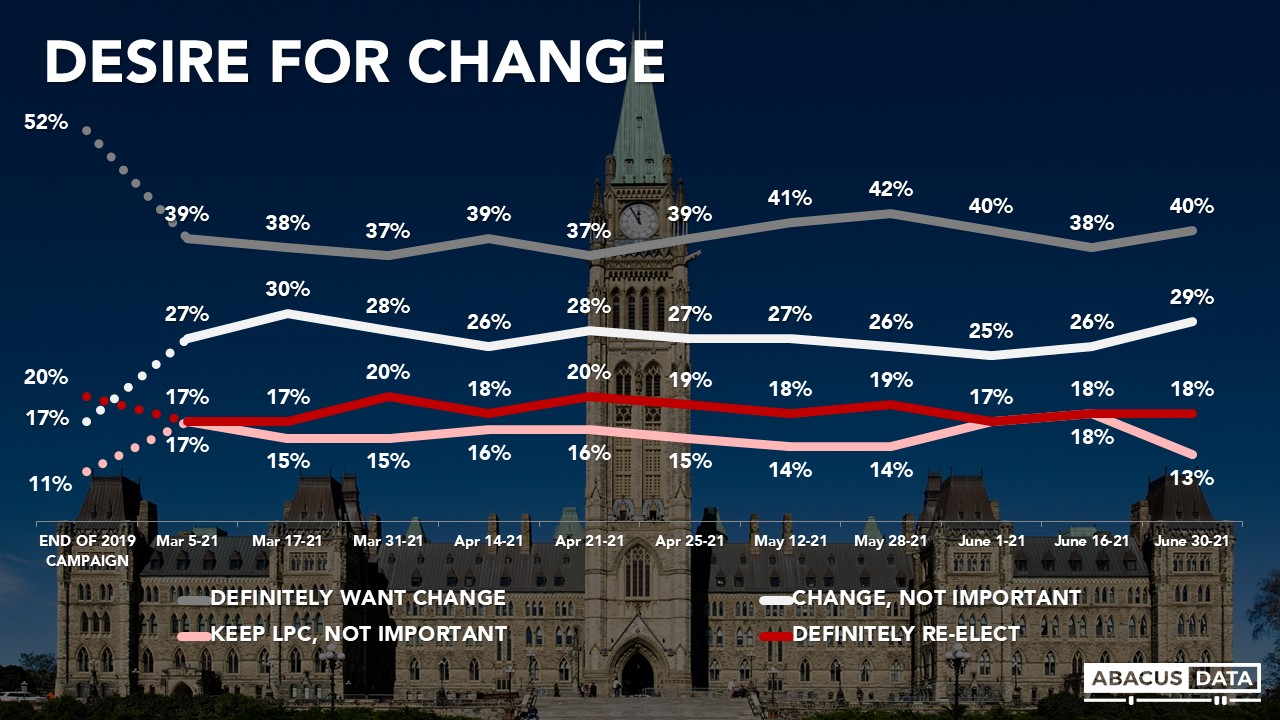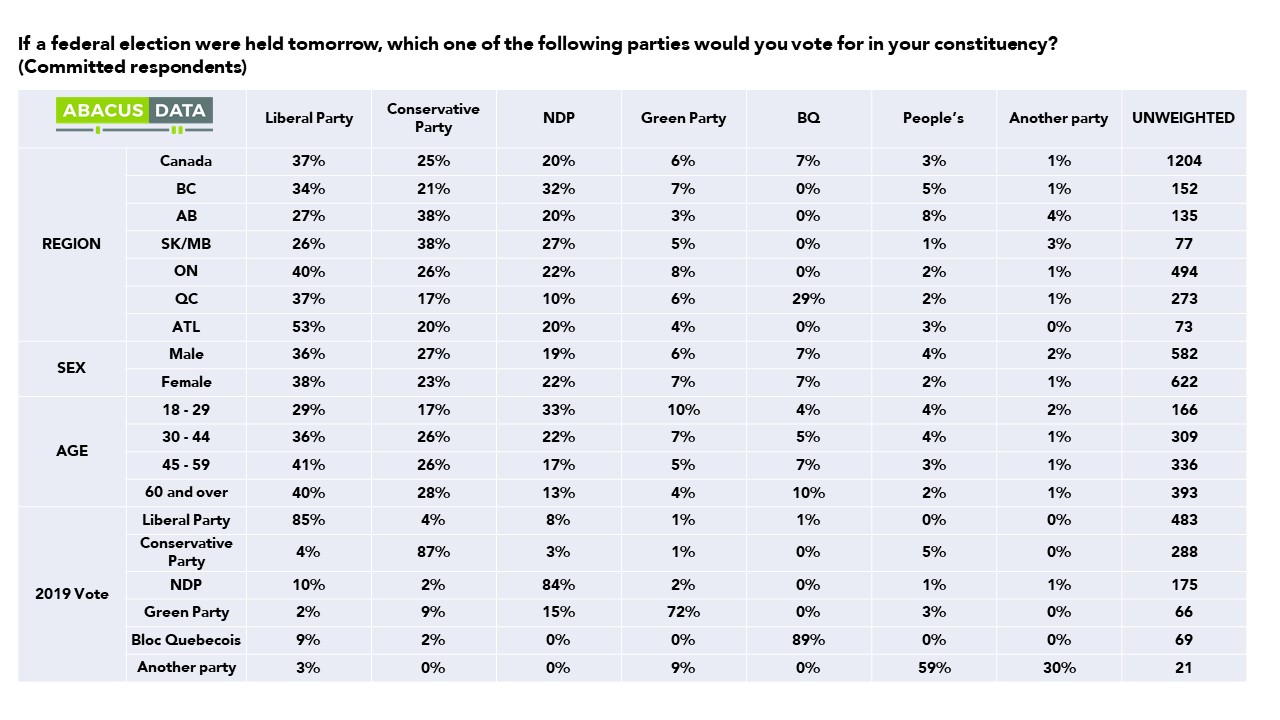Unpublished Opinions
Having conducted research for some of North America’s leading corporations and advocacy groups, we deliver global research capacities with the attention to detail and focus of a boutique firm. We have the capacity to conduct surveys, focus groups (on- and offline), membership surveys, elite and stakeholder consultations, and build online research communities. Our team combines the experience of our Chairman Bruce Anderson, one of Canada’s leading research executives for two decades, with the energy, creativity and research expertise of CEO David Coletto, PhD. We all value integrity, hard work, and creativity believing good research insights come from an intense focus on our clients, rigourous methods, and occasionally challenging convention. Whether it is a public opinion study on a challenging issue or consumer research on likelihood to recommend, our team has the experience and energy to deliver deep insights on-time, on-budget, and with creative perspective. - See more at: http://abacusdata.ca/about/#sthash.euNpekw1.dpuf
2021 is not 2019: Liberals well ahead as Conservative vote hits a new low

By Bruce Anderson & David Coletto
We just completed a national survey of 1500 Canadian adults (June 10-15). Here’s what the survey found:
HOW BIG ARE THE PARTY VOTER POOLS?
If there is a national election in Canada this year, it may have a different flavour than recent elections.
The “accessible voter pool” (meaning the number of people who would consider voting for each party) has shifted. Today, the Conservatives (41%) sit behind both the Liberals (56%) and the NDP (48%). In Quebec, 51% are open to voting Liberal, 43% BQ, 31% NDP, and 25% Conservative.
For the Conservatives, this number is hazardously low and 7-points lower than at this point last year and are just 36% among those under 30, 37% among women, and less than 22% of current supporters of the Liberals, NDP, Green Party and Bloc. Only 39% of those who describe themselves as being on the centre of the spectrum say they would consider voting Conservative right now. No less worrying for Conservative campaign organizers may be the fact that 20% of those who consider themselves right of centre won’t consider voting for the CPC today.
For the Liberals, the 56% pool is some 6-points higher than it was in July 2019, before the last election. Less than 1 in 5 BQ voters (17%) and 22% of Conservative voters would consider voting Liberal, but 47% of Green Party and 49% of NDP voters would consider casting a ballot.
For the NDP, 48% indicates a higher degree of potential than we saw in the run up to the last election. A good deal of the potential lies in the fact that 66% of those under 30 will consider the NDP, a notch better than the Liberals at 62%) and almost 30 points ahead of the Conservatives (36%).
Among those who say they will definitely vote (which sometimes is a useful way to identify likely voters from those who may not turn out) 57% will consider the Liberals, 50% will consider the NDP and 42% will consider the Conservatives.
CURRENT VOTING INTENTION
If an election were held now, the Liberals would win 37% of the vote, the Conservatives 25%, the NDP 20%, the Green Party 7% and the BQ 29% in Quebec (8 points behind the Liberals).
• In BC we see the Liberals and NDP statistically tied (34% to 32%) with the Conservatives further back at 21%, and the Green Party polling at 7% .
• The Conservatives’ wide leads in the Prairies, are not as wide as they have been in the past. In Alberta, the Conservatives have 38% support, followed by the Liberals at 27% and the NDP at 20%. Another 15% of the voting intention is divided up among the Green Party (3%, the Peoples Party (8%) and another party (presumably the Maverick Party) with 4%.
• In Saskatchewan and Manitoba, we find the Conservatives with 38% support, the NDP at 27% and the Liberals with 26%.
• The Liberals (with 40%) have a 14-point lead over the Conservatives (26%) in Ontario, with the NDP at 22% and the Green Party at 8%.
• In Quebec, we see the Liberals with 37%, followed by the BQ (29%) the Conservatives (17%) the NDP at 10%.
• In the Atlantic provinces, the Liberals (53%) are well ahead of the Conservatives (20%) and the NDP (20%)
• Among the most likely voters (those who say they are certain to vote) the Liberals lead with 36% compared to 26% for the Conservatives, 20% for the NDP another signal of a Conservative “motivation” challenge, compared to past elections.
• Among self described “left of centre” voters, the Liberals (49%) lead the NDP (30%) and the Conservatives have 10% support.
• Among self described right of centre voters, the Conservatives have 64% support, followed by the Liberals (13%) the NDP (7%) the Peoples Party (6%) the BQ (6%) and Green Party (2%).
• Among those who say they are on the centre of the spectrum, the Liberals lead with 38% compared to 20% for the Conservatives, 18% for the NDP, and 9% for each of the Green and BQ parties.
This overall picture – today, with the caveat that elections can cause a lot to change – suggests the Liberals and the NDP are both better positioned than they were just before the 2019 election, and the Conservatives find themselves more weakly positioned due to a smaller accessible voter pool, only average motivation among Conservative voters (something they normally have an advantage on), and facing competition from both left and right, including in the Prairies, which has been a stronghold for the party in the past.
LEADER IMPRESSIONS
Justin Trudeau enjoys a positive impression among 40% and finds negative impressions among 39%, for a net score of +1. Trudeau is +6 in BC, +2 in Ontario, +12 in Quebec, and +9 in Atlantic Canada. He is -27 in Alberta and -19 in Sask/Man. Among those who will definitely vote, Trudeau is 0. Among those who say it would be “good to have a change of government but they don’t feel that strongly about it”, Trudeau is +20.
Jagmeet Singh enjoys a positive impression among 38% and finds negative impressions among 25% for a net +12. Singh is +24 in BC, +3 in Alberta, +15 in Man/Sask, +17 in Ontario, -2 in Quebec and +24 in Atlantic Canada. He is +6 among men and +18 among women. Among those who say it would be “good to have a change of government, but they don’t feel that strongly about it”, Singh is +28.
Erin O’Toole enjoys a positive impression among 21% and finds negative impressions among 39%, for a net score of -20. O’Toole is -25 in BC, -7 in Alberta, -13 in Man/Sask, -23 in Ontario, -18 in Quebec and -35 in Atlantic Canada. He is -19 among centre voters and +31 among right of centre voters (with less than half registering a positive opinion). Among those who say it would be “good to have a change of government, but they don’t feel that strongly about it”, O’Toole is -14.
Among NDP voters Mr. O’Toole is -53; among Liberal voters he is -47.
Among Conservative voters, Mr. Singh is -26; among Liberal voters he is +23.
Among NDP voters, Mr. Trudeau is -11; among Conservative voters he is -60.
GOVERNMENT APPROVAL
Today 46% approve of the job being done by the Trudeau government, while 39% disapprove. This +7 net score nationally breaks down to a +10 in BC, -15 in Alberta, -11 in Man/Sask, +10 in Ontario, +14 in Quebec, +5 in Atlantic Canada.
Some 19% of Conservative voters approve of the federal government’s performance, as do 32% of BQ voters, 33% of Green Party voters, 41% of NDP voters.
Among those who say it would be “good to have a change of government, but they don’t feel that strongly about it”, 51% approve and 21% disapprove of the Trudeau government.
Among those who say they will definitely vote 47% approve and 41% disapprove.
DESIRE FOR A CHANGE
Today 40% say it’s definitely time for a change in government, which is some 12-points below the reading we found just before election day in 2019. Another 29% would prefer to see a change but don’t feel all that strongly about it.
• Among Conservative voters, 75% are adamant about wanting a change and 23% prefer a change but don’t feel that strongly about it.
• Among NDP voters, 52% are adamant about wanting a change and 35% don’t feel that strongly about it.
• Among Green Party voters, 46% are adamant about wanting a change and 39% don’t feel that strongly about it.
• Among BQ Party voters, 41% are adamant about wanting a change and 30% don’t feel that strongly about it.
UPSHOT
According to Bruce Anderson: “The overall feeling one gets from these numbers is that there are a lot of progressive voters in play, an NDP leader who has built a positive image during the pandemic – but at the same time a fairly muted desire for change in government, and a reasonably good level of approval for the PM and his government.
On the Liberals right flank, there’s some evidence that the Conservative brand is not as strong as it has been in the Prairies, is not terribly competitive in Quebec and Ontario, and the Conservative leader has lost favourability – at a fairly steep pace – during the pandemic.
If the Conservatives have been banking heavily on disaffection with Mr. Trudeau or his government as fuel for their campaign, they may need to find another gear or a different narrative, as swing and centre voters don’t seem drawn to the arguments they are presenting. While their weak appeal with voters on the centre of the spectrum, (the plurality of voters), should be their priority if they are campaigning to win an election, their vulnerability on the right will be their priority if they are worried about not losing ground.”
According to David Coletto: “A 2021 campaign, if it comes this summer, will begin in a very different opinion environment than in 2019.
Although a similar number of people would like to see a change in government, the intensity of that desire is much more muted than in 2019. The country is in a far better mood and the Liberal government has a solid approval rating. The Prime Minister’s personal numbers are much stronger than at this point in 2019 and the opposition Conservatives lack a motivated base, a popular leader, or an issue to galvanize voters around.
It is hard to imagine that an opposition leader (O’Toole) with half as many people with positive views and about equal numbers with negative views as the Prime Minister can challenge for the top job. If anything, NDP leader Jagmeet Singh is the wildcard – he is very appealing to younger voters and has a larger pool of accessible voters than in 2019. If Mr. Trudeau or the Liberals stumble, the NDP is well-positioned to take advantage.”
METHODOLOGY
The survey was conducted with 1,500 Canadian adults from June 28 to 30, 2021. A random sample of panelists were invited to complete the survey from a set of partner panels based on the Lucid exchange platform. These partners are typically double opt-in survey panels, blended to manage out potential skews in the data from a single source.
The margin of error for a comparable probability-based random sample of the same size is +/- 2.6%, 19 times out of 20.
The data were weighted according to census data to ensure that the sample matched Canada’s population according to age, gender, educational attainment, and region. Totals may not add up to 100 due to rounding.













Comments
Be the first to comment